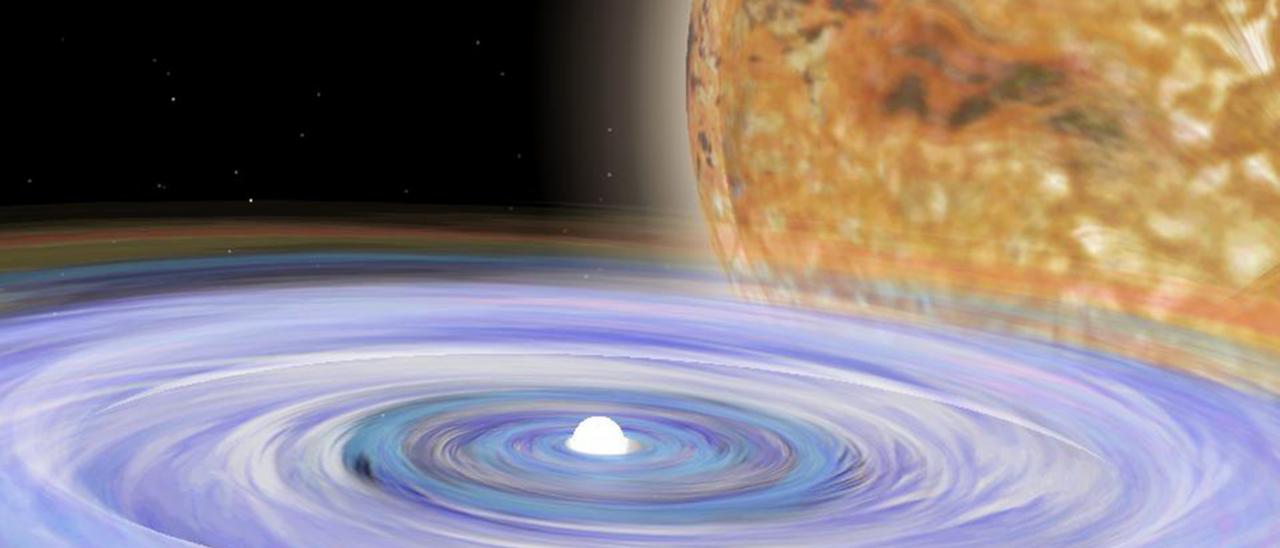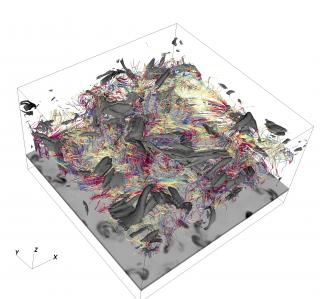Subvenciones relacionadas:
General
El estudio de las estrellas binarias es una parte esencial de la astrofísica estelar. Una gran parte de las estrellas de nuestra Galaxia y de otras galaxias se ha formado en sistemas binarios o múltiples, por lo que entender la estructura y evolución de estos sistemas es importante desde el punto de vista estelar y galáctico. Un aspecto en el que las binarias juegan un papel fundamental es en la determinación de parámetros estelares absolutos, siendo la única fuente de valores precisos para los radios y las masas estelares.
Líneas de trabajo:
- Determinación de parámetros absolutos en binarias eclipsantes de tipo Algol. Desde 2006 se trabaja en la determinación precisa de sus parámetros absolutos estelares en el rango de la secuencia principal poco masiva, mal conocidos, y poner a prueba los modelos de atmósferas estelares para estrellas de tipo espectral M más modernos.
- Estudio de variables cataclísmicas con periodos orbitales cortos. Va dirigido a entender las estructuras de acreción que se forman a consecuencia de la transferencia de masa hacia la enana blanca desde su estrella compañera, así como la evolución de estas estructuras. Entre los objetivos se pretende corroborar o desmentir las predicciones que hace la teoría estándar de evolución de estos sistemas binarios, llevando a cabo estudios de poblaciones tanto en la región cercana al mínimo periodo orbital observado (~ 80 min), como en la frontera superior del "hueco de periodos", el intervalo de periodos orbitales comprendido entre 3 y 4.5 horas. Al llegar los sistemas a un periodo orbital de 3 horas la teoría predice el cese de la transferencia de masa hacia la enana blanca, lo cual parece contradecirse con la existencia de cataclísmicas con los mayores ritmos de transferencia de masa justo en la frontera superior de 3 horas. Se están realizando medidas de las masas de estos sistemas durante estados de cese temporal de la acreción, cuando la desaparición del disco permite la observación de ambas componentes estelares. Este último proyecto cuenta con una amplia colaboración internacional, y requiere observaciones en modo "Target of Opportunity" con telescopios de clase 8-m, como el VLT y Gemini, así como el GTC de 10.4 m.
- Estudio de estrellas binarias progenitoras de nebulosas planetarias. Uno de los posibles efectos que podrían esculpir una nebulosa planetaria bipolar es la órbita de una estrella binaria central, que contiene al menos una enana blanca. Por tanto, se busca una correlación significativa "bipolaridad-binariedad" a partir de su estudio. La historia de los episodios de eyección de masa dará pistas acerca de la fase de envoltura común, aún poco entendida. Esta línea de investigación se realiza en colaboración con el proyecto "Física de Nebulosas Ionizadas (P/308614)".
- Desde mediados de 2017 hemos abierto otra línea de investigación en el campo de las enanas blancas: la búsqueda y estudio de remanentes post-planetarios alrededor de estas estrellas, que puede beneficiarse en gran medida de la experiencia de los estudios de discos de acreción en las variables cataclísmicas.
Miembros
Resultados
-
Muchas enanas blancas muestran signos de haber incorporado material procedente de cuerpos más pequeños, lo que implica que pueden albergar sistemas planetarios. A través de sus líneas de emisión, conocemos ya un pequeño número de estos sistemas que contienen discos de residuos gaseosos alrededor de la enana blanca. Hemos descubierto una variación periódica estable de 123.4 minutos en la intensidad y la forma de los perfiles de la línea de emisión de Ca II originados en el disco de residuos alrededor de la enana blanca SDSS J122859.93+104032.9, que interpretamos como la firma de un planetesimal sólido en órbita a su alrededor y mantenido de una pieza por su fuerza interna. Este trabajo ha sido publicado en Science.
-
Descubrimiento de una envoltura gigante en forma de burbuja alrededor de M31N 2008–12a, la nova recurrente con el periodo de recurrencia de erupción más corto conocido (un año). Resultados publicados en Nature.
-
Un estudio basado en espectrofotometría rápida de la enana blanca WD 1145+017 con el telescopio GTC y el espectrógrafo OSIRIS ha sido publicado en Monthly Notices of the Royal Astronomical Society. En él se confirma la evolución de los tránsitos periódicos que ocurren cada 4.5 horas. También se ha detectado el tránsito más profundo detectado hasta la fecha, producido por seis fragmentos igualmente espaciados provenientes de un planetesimal en proceso de desintegración.
- Se ha obtenido tiempo de observación a través de un International Time Programme para encontrar contrapartidas electromagnéticas de eventos de ondas gravitatorias (Investigador Principal: P. G. Jonker, SRON, The Netherlands).



